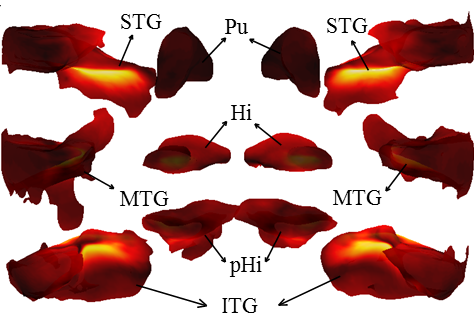Pose, Shape, Volume, and Tissue Composition Analysis of sMRI
Abstract
The purpose of this study was to find structural brain differences between adolescence and young adulthood individuals on their very first episode of MDD and healthy controls. This is important because understanding neuroanatomical features that characterize the earliest stages in the course of MDD may provide important clues as to the disorderís initial etiology. Eleven depressed (mean age: 18, range: 16-21) and fourteen six healthy (age: 18) individuals were enrolled in this study. First, jICA multivariate technique was applied to combine brain-deformation information with tissue composition to investigate differences in hippocampal volume in a sample of young people in their first episode of MDD in comparison with a sample of age-matched healthy controls. The combination of hippocampal shape deformations and local composition of tissue in the left hippocampus, but neither hippocampal shape nor local composition of tissue alone, were shown to discriminate reliably between individuals with a first episode of depression and healthy controls. Second, a multi-object statistical pose+shape model was used to analyze brain temporal and limbic lobesí structures in the same sample of adolescent/young adulthood subjects. Results confirmed that brain temporal and limbic lobes structures provides complementary information to study MDD in adolescent/young adulthood subjects.
Papers
Independent Component Analysis on Lie groups for Multi-object analysis of First Episode Depression
38th IEEE International Conference on Acoustics, Speech, and Signal Processing (ICASSP'13) ,2013.
Multi-Object Statistical Analysis of Late Adolescent Depression
SPIE Medical Imaging,2013.
Mahdi Ramezani
Last modified: Nov 16, 2012
